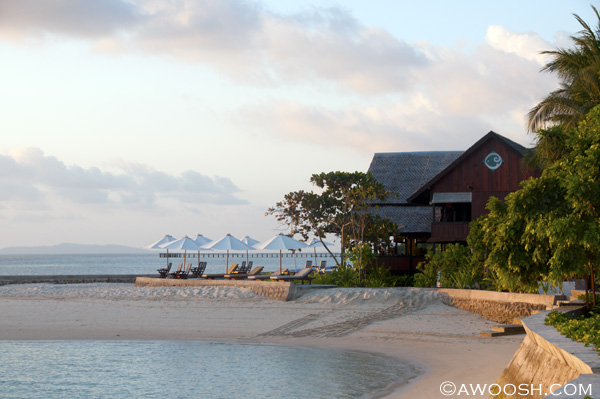
The long house at Wakatobi – which was the original lodge. The resort has grown to include a separate dining area and numerous guest bungalows. The long house now serves as main reception, camera room, dive center, boutique and nice lounging area.
Wakatobi had been on my wishlist for many years – spoken of (and written about) with reverence, and illustrated by the images of some top tier photographers, I had heard it described as the “nicest dive resort in the world, with a fantastic house reef”.
With that description, it became a siren call that could not be ignored.
When one of our regular dive buds offered to step up and organize a trip to Wakatobi, it was a no brainer to sign on – after all, what could be more perfect? A great group of friends with whom to share the experience (there were 14 us, so Wakatobi committed to assigning us our own boat for the duration), with the added bonuses of a getting a group discount, and getting our rates locked in just prior to a significant pricing increase at the resort.
Side Note: It’s been a while since I cooked up a big old fashioned trip report like this. I will share some of the many images I captured while at Wakatobi. Over the next few weeks, I’ll continue to share more of them on this blog, as “Pic of the Day” mini write ups, so if you are interested in following them, please revisit.
Getting There
In the final weeks leading up to the trip (in mid September 2013), Mr G sadly informed me that due to some urgent business issues, he could not make the trip. I made the decision to go on my own, because much as I dislike traveling solo, I would have the company of good friends once there.
Traveling in a “free” Aeroplan rewards seat almost always calls for some roundabout routing, and this trip was no exception. I flew from Vancouver to Hong Kong, then connected to a flight to Bangkok. I had an overnight layover in Bangkok (both ways), as well as overnighting in Bali both on arrival and departure there. The overnights in Bali are recommended when connecting to and from local Indonesian carriers (in this case a private Wakatobi charter) with international flights. A missed connection to a points redemption Business Class seat could have very sad consequences ;^) And missing the flight to Wakatobi apparently makes for a very adventurous 3 day journey to get there by boat…
As previously, when transiting through Bangkok, I chose to stay at the Novotel at Suvarnabhumi Airport – a bit spendy for the quality of the hotel, but super convenient as it is only a (free) 5 minute shuttle bus ride from the main terminal. Added bonus: I discovered on this trip, when I had a morning to kill before flying out early afternoon, that the hotel has a very nice, serene outdoor pool area, and a well-equipped gym. The rooms are quiet and well-appointed, and the bar and restaurant in the main lobby are reasonably priced and offer decent food.
In Bali, for the quickie overnights close to the airport, I again chose the Parigata Resort & Spa, in the seaside tourist town of Sanur. It’s a great value for the price, quiet, close to the beach, shopping, and restaurants. It has a decent pool area, and the on-site spa has some very attractive pricing for massage. I endured two 90 minute massages at the Parigata on this trip, for US$28 (plus generous tip) each. Sweet! Added bonus: the new expressway to the airport is now open, shaving quite a bit of time off what used to be a half hour commute (in typical heavy Bali traffic).
The whole wonderful Wakatobi experience started on arrival at Bali’s Ngurah Rai International Airport, a day before I was to meet up with the group to fly out to the resort. I have had the joy (sarcasm on) of transiting through this airport on many occasions. The brand new terminal was just about to be opened when I was there this time, and should (hopefully) make the experience a little less painful in the future.
In Bali, you buy your Indonesian tourist visa, on arrival, for US$25 (cash). So typically you arrive, deplane, and then wearily line up to kingdom come with innumerable other tourists to buy your visa from the far too few kiosks in the Arrivals area. Then you line up again at Customs & Immigration, where again, there appear to be far too few tortoise-paced authorities to process the teeming masses that arrive incessantly at this very busy airport. Then you collect your luggage, line up again to shove it through a scanner (so don’t be thinking you can smuggle in that extra bottle of booze ;^), walk the gauntlet of the many money changers (it’s just as easy to use the ATM in the Arrivals hall – and less chance of getting ripped off), until finally you are released into the throngs of name placard-waving greeters and gypsy cab promoting drivers, who are all apparently very eager to take you for a ride. The whole, exhausting process to get out of the airport can easily take an hour.
On this trip, one other buddy from our group (who was on the same flight out of Bangkok) and I were met at the ramp by a Wakatobi representative, as part of their awesome ‘meet and greet’ service. She took our passports and our $25 cash, disappeared for a few minutes, and then returned with our Visas duly processed. Impressive. Then we were fast tracked through the Customs & Immigration area, and actually arrived at the baggage carousel before they started kicking out the bags. Magic. Another Wakatobi representative took over from there, and escorted us to the official taxi booth (which is highly recommended – do not get sucked into the gypsy cabs), where he helped us buy vouchers for our cabs, tucked us into the cars, and said ‘see you tomorrow’. Now that is service.
After the quick overnight in Sanur (cost of cab approximately 120,000 Rupiah or US$12 each way), it was back to the airport, this time to be met at the curb by Crispin, Wakatobi’s Manager in Bali. He politely inquired to ensure that everything had gone smoothly thus far, and sent us on our merry way to check in for our flight, assisted by yet more Wakatobi reps. Again, a very easy and quick process. Then we were escorted to a “private lounge” to await the boarding call for our charter flight. The lounge was not in any way special, but more comfortable for sure than the public waiting areas of the airport, and it was a grand reunion meeting up with the buds again, and being introduced the newest additions to our group.

Modest vs Deluxe. The boat in the foreground is a local fishing boat, aground at low tide. The boat in the distance is the luxe Wakatobi live aboard – The Pelagian.
The turbo prop flight to Wakatobi (located off the southwest coast of the big island of Sulawesi) took about 90 minutes. A tasty light lunch was served in-flight. On arrival on Tomia Island, where the airstrip is located, we were whisked into a fleet of SUVs for a ten minute drive to the waterfront, where cute local kids lined the wooden promenade to greet us (and scam whatever little trinkets and small change we could give them). Note for future travellers to Wakatobi: your generosity to the local children is appreciated, but it is preferred that you bring school supplies etc, and give them to the resort management to distribute to the local village school. They rightly want to discourage the kids from a culture of begging…
From the dock, we were ferried out to the waiting dive boats that were to transport us to Onemobaa Island, where the resort is located. Cool towels and cold water were handed out, and we were on our way for the quick, ten minute crossing to the resort. The bags followed, and were delivered directly to our rooms for us.
The Resort
Wakatobi is owned and managed by Swiss entrepreneurs, and as such, the thing runs like clockwork. Very professionally managed and operated, environmentally conscientious, committed to hiring and training local residents whenever possible (and creating hundreds of jobs in the process), this is a place that does it right. While our group was at the resort, we had the opportunity to spend some time with Lorenz Mäeder, founder and Director of Operations, which included watching him dive his rebreather, on which he has hundreds, if not thousands, of dives. His attention to detail is legendary, and is demonstrated by all of his staff who interact with guests.
On arrival, we were all quickly and efficiently shown to our accommodations – mine being a very nice little waterfront Ocean Bungalow (#6), that I chose for its halfway house status between dive center and restaurant. With a king-sized bed, lots of closet space, a generous desk area for recharging electronics, nicely appointed indoor washroom with a lovely outdoor shower, and a covered front porch with daybed, it was great – it was just missing Mr G to be perfect. Some of our group bucked up for the villas (there are four of them). These are fabulous accommodations – some with private plunge pools (the two bedroom villa has a large, private pool), and all with lovely terraces overlooking the ocean.
All meals at Wakatobi are served buffet-style, in the main restaurant. The high quality and ample and delicious selections of our first lunch there set the standard for the rest of our ten day stay. The food was all good – tasty, fresh, beautifully prepared and presented, and with a nice mix of Indonesian and western dishes. At lunch, a daily pasta was made to order, and special requests like Nasi Goreng (fried rice) and Mi Goreng (fried noodles) were fulfilled with no problems. I had no trouble at all sticking to my plan to have a ‘healthy holiday’, which meant limiting the naughty bits like breads, pasta and desserts (all of which looked fab), and going light on the alcohol. I did break down and sample the home made ice cream (out of this world!) and the flourless chocolate cake, which was so good that I requested the recipe, and was given it, nicely printed out, by the head chef.
Although an ‘upscale’ dive resort, Wakatobi is not fancy. Shoes are really not necessary for the duration of your stay. Bare feet are requested in the dining area and in the accommodations. There is a foot wash at the entrance to all buildings. The walkways in the resort are sandy, and I loved parking my shoes on arrival and not wearing them again until departure. Attire is casual, although they do have a Manager’s cocktail party once a week that is nice to dress up a bit for.
The resort has a gorgeous, sunset-bathed jetty bar (but look out for the banded sea snakes that like to curl up on the promenade or visit the bar after dark! ;^) and alcohol can also be purchased in the restaurant. Of note, wine at the resort is very, very spendy – even for pretty pedestrian labels – something to do with massive import taxes on alcohol in Indonesia. Local (Bintang) beer prices are more reasonable, but not nearly as cheap as elsewhere in Indonesia. But hey, they’ve got to get the booze there – and that is heavy (and therefore expensive) cargo for air travel. The dock bar offers a 40% off Happy Hour daily – if I recall correctly from 4.30 to 5.30 pm. There are small bar fridges in all the accommodations, so bringing your own bottle is not a bad idea…
The resort offers ‘Spa Services’, including massage. I partook of several of these during my ten day stay, and each one was great. The young, local girls who work at massage have been trained by instructors brought in from Bali. The quality and professionalism of both of the young ladies who gave me my massages was great (US$55 for 60 minutes/US$75 for 90 minutes, at time of writing). My only suggestion for improvement for management is to create a dedicated space for the spa, away from any hustle and bustle of day to day operations and/or guest traffic. While we were there, the resort was, for a few days, completely full, and massage moved from being located in an unoccupied guest bungalow to a temporary set up in the medical clinic. Not exactly the spa-like ambience one would hope for…
The Diving
After signing the dive waivers and getting a briefing of how the dive op works (fantastic set up, more on that later), we were invited to do a dusk check out dive on the house reef. I chose to the leave the camera ashore for this dive, as it had been a while since I had been in the water, and I was feeling quite fatigued from the travel, so did not want to task load on the dive nor rush putting the camera together in time. We had been told we would have to successfully pass a skills drill on the check out dive as well, which might have meant the camera would be a bit of a handful.
Our large group of 13 was divided into three smaller groups (4, 4 and 5), in which we stayed, and, for most of us, had the same dive guide, for the duration. Our group of 5 was guided by Marco, a charming Italian guy who is a longtime and loyal fixture at Wakatobi. Marco is an accomplished photographer, and so has a great eye for nice scenics and was a very obliging model for me when I requested. He can also offer good advice about which lens to choose for which site. He knows all of the many sites very well, and was very adept at finding known, ‘special’ critters at each one.
Of note, the dive guides at Wakatobi do not carry cameras when leading dives. One of these days I’ve got to blog about the questionable practice of paid guides with their heads in their cameras instead of keeping an eye on their customers…
Anyhoo, the original boat briefing, and the all the subsequent dive site briefings were consistently very thorough. Marco wanted to make sure we were happy, and took our pulses frequently. There was not much to be unhappy about, what with the gorgeous, pristine coral gardens, although we were all somewhat surprised by the cool water temperatures (if we had read the very comprehensive Wakatobi Dive Resort website more carefully before packing, we would have been the wiser ;^). It was winter in Wakatobi. My Suunto (dive computer) regularly measured 78-80F, and Suunto is known to be generous. I would guess that the temperature was more around the 77-78F mark, with a few warmer thermoclines near the surface, and a few really cold ones at depth. I was very chilled after every dive, despite wearing a full 5 mm suit, plus a 5/3 hoody vest. I regretted that I had not packed my ratty 7 mm core warmer. The first clue that things might be a bit cooler than expected was seeing our dive guide donning his drysuit before that first check out dive. Oy. He was the only one though – the rest of the guides sucked it up and dove wet like the rest of us. And, fortunately, air temperatures were very warm – mid to high 80’s during the day, and not dropping much at night. September is in the dry season – we saw no rain at all.
The basic skills test required mask removal, re-don and clear, and donating air to a buddy. It has been a long time since any operator I’ve dove with has required a check out skills test like this, but maybe it’s not such a bad idea. It appears that Wakatobi puts safety first – safety of their guests, and protection of the reef. Divers with poor buoyancy control get special scrutiny, and may, in some cases, be required to engage a private dive guide to supervise their dives. This is a refreshing change from being in some locations and seeing wild herds of divers careening down the reef, grabbing corals with their hands as they crash into the bottom or pull themselves along in current, and/or fin kicking the crap out of the reef. I’ve been there, seen that too many times.
The guides went out of their way (literally) to drop the three groups on our boat on varying parts of the reef, so often we wouldn’t see any divers from the other groups for the entire dive. We all appreciated this strategy. Having a long line up for a special shot can be grating, and it can be especially frustrating trying to shoot wide angles when there are tons of divers (and their bubbles) in the frame. Also, being (inadvertently) bumped, jostled or fin kicked, something that can happen when lots of divers get bunched up, is never a happy thing.
Dives were limited to 70 minutes, although we managed to stretch that a few times, as our group was good on gas. The dives on the house reef have no time limit – something I took keen advantage of, and bagged a couple of two hour dives.
Wakatobi appears to have a regular, scheduled rotation of dives. The boats (they have at least 6 large dive boats, each looking to be capable of taking at least 20 divers) are listed on a board in the dive area, with the name of the sites pre-chosen for each boat for each day.
The Nitrox station is very organized and logical (as is the entire resort and its operations). Tanks are gathered there after filling – they have a couple of inline SPG/Nitrox Testers, so you can see your fill and your mix at the same time. You fill out the form on a clipboard with these two numbers, plus your MOD (maximum operating depth) and your diver number, throw a tag on the tank valve with the same info, and your tank finds its way to your station on your dive boat. All divers are assigned a diver number (and station on shore) on arrival. All gear is tagged for you with your name and number, and then carried out to the boats. The gear stays on the boat for the duration, unless you indicate that you plan to shore dive, in which case they bring it ashore for you to park in your station. The Nitrox fills were consistently between 32 and 34%. The whole thing works pretty much as smooth as buttah…
For sites not too distant from the resort, the boat typically returned between the two morning dives, to swap out tanks. Most often we stayed on the boat for these surface intervals, as, at low tide, the dive boats can’t come in to the pier, so small taxi boats shuttle folks in and out via the beach. Towels, snacks, and hot and cold drinks are supplied on the break between dives. All surface intervals clocked in at at least one hour.
To be honest, the sites we dove, with a few exceptions, became a bit of a blur. Many of them, despite the distances between them, seemed to share similar topography – being for the most part fringing reefs around islands, with typically a fairly steep “wall” formation, bottoming out somewhere between 60 and 100+ feet. These walls were, without fail, paved with astonishingly healthy and abundant hard and soft corals, right up to shallow coral gardens – on some sites just a few feet below the surface (so therefore great for snorkelers too). And they were quite fishy – most especially with large populations of trigger fish.
I mean seriously – these were the healthiest reefs I’ve seen in a long time. This is in part due to the remoteness of the resort – Wakatobi Resort (and its Pelagian live aboard) is the only operator diving in this area. It would appear that Wakatobi’s reefs have been missed by any recent strong tropical storms, and because of the large number of sites, there does not appear to be too much in the way of diver-generated damage. I saw no evidence of coral bleaching at all.
In this blur of beautiful reefs, there were a few standouts – my favourites were ‘Blade’ – a unique, narrow, knife edge of a site out in the middle of nowhere (and the farthest we ventured from the resort – about a 45 minute commute each way, highlighted by seeing a large pod of dolphins) and The Zoo, which as its name suggests, has a really awesome array of cool critters to be seen.
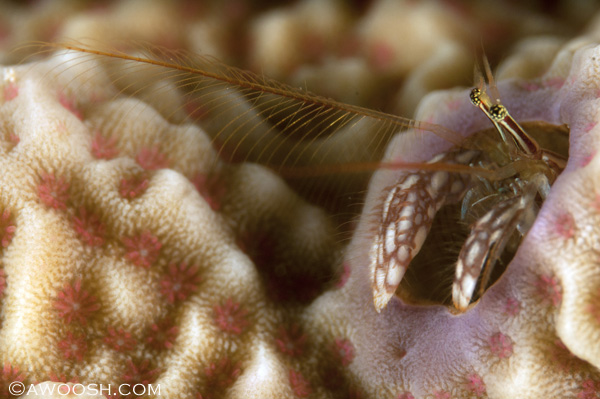
Coral Residing Hermit Crab (Paguritta sp 1). I got a little obsessed trying to get a pleasing shot of one of these things, which I can’t even see without looking through my macro lens. They are seriously tiny – less than half of an inch long.
I will confess that while it was all wonderful, I found myself missing ‘muck diving’. The reefs around Wakatobi are very pretty, but I missed the weird and wonderful stuff that can be spotted in much less picturesque locations in Indonesia – in mucky bays in busy, polluted harbours as an example ;^) Seriously, I have surprised myself by becoming a muck hound, and the perfect trip for me offers both beautiful, fishy, pristine reefs like we saw at Wakatobi, with some critter-rich muck thrown in for good measure.
Being that I was chilled on every dive, and that we experienced some fairly strong currents during our time there, I gave a miss to the two boat night dives that were on offer. Instead, on those days when a night dive was offered instead of an afternoon dive, I chose to do nice, long, luxurious dives on the house reef while there was still enough sun to warm my bones when I crawled out of the sea.
The House Reef
Wakatobi offers three boat dives a day as part of their dive program (two the day before departure). To that, unlimited shore diving on the house reef is available, although I found it hard to squeeze in very many shore dives, with the boat dive schedule timed as it was.
The house reef is a great dive. I would opine that the corals do show some wear and tear – likely from a combo of many divers and some storm surge, but the wall, which is quite steep in places, is pretty much covered with stuff, and parts of the reef are quite fishy.
There are several ways to dive this reef, mostly dictated by the currents. Most typical is a current running north to south. In this scenario, a taxi boat can take you up current a ways and drop you in for a nice drift back to one of the two (man-made) cuts in the wall where it is possible to exit back to shore. We did one dive when it ran the opposite direction, so we started in the south and drifted north, past the big cut (into the marina area), until the current turned and brought us back to the exit. On that dive, we saw the whole reef, and then some – quite a long distance. The third way to dive it, and the way you must dive if you go in after dark, when the taxi boats no longer run, is to enter and exit via one or both of the two cuts through the reef. If the current is really honking (as it can do), this can be a tricky, or short, dive. They do have a tide table posted in the dive area. Highly recommended to read it carefully and pick your times to shore dive accordingly.
Some of the things I spotted on Wakatobi’s house reef: a huge herd of Bumphead Parrotfish (I lost count after 24), on one dive – an amazing sight. The largest Barracuda any of us had ever seen – truly, a monster of a fish. Crocodile Fish. Octopus out hunting. Spinecheek Anemonefish. False Clown Anemonefish. Pink Anemonefish. Nudibranchs. Lots of small schools of fish. I could do this dive many times and not tire of it…
Our departure from the resort was pretty much as seamless as our arrival. The day before departure we were given instructions on timing for baggage to be left out for the porters. Our dive gear and wetsuits were washed and hung to dry in the sun, ready for packing. Tip envelopes, with tipping policy, were left in our rooms, as were surveys about our experience at Wakatobi. Like many live aboards, and other resorts I’ve stayed at, Wakatobi prefers that guests, should they choose to leave a tip, leave an amount to be divided equally amongst all the staff – those who have interactions with guests, and the many more who work hard behind the scenes.
The boat crossing to the airport, the flight out, the meet and greet by Wakatobi staff on arrival in Bali, the assistance once again with taxis etc all went without a hitch.
So, I think that pretty much covers it – food and beverage, diving, accommodations, transfers. Wakatobi is not an inexpensive dive destination, but, keeping it real, the cost for a stay at Wakatobi is comparable to a high quality live aboard in Indonesia. Being able to enjoy some great diving, from land-based ops, has its appeals…

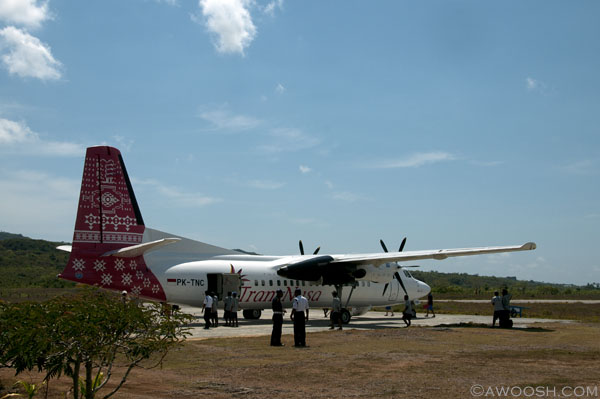

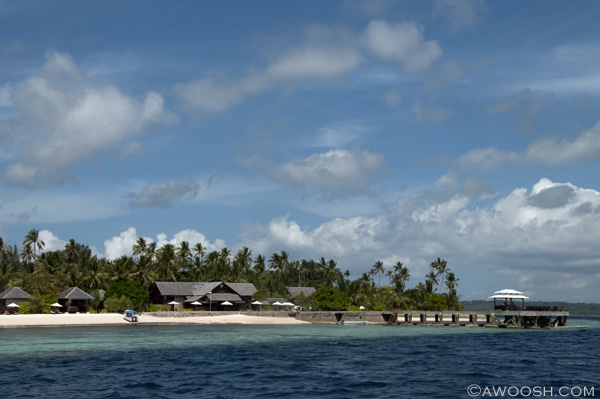
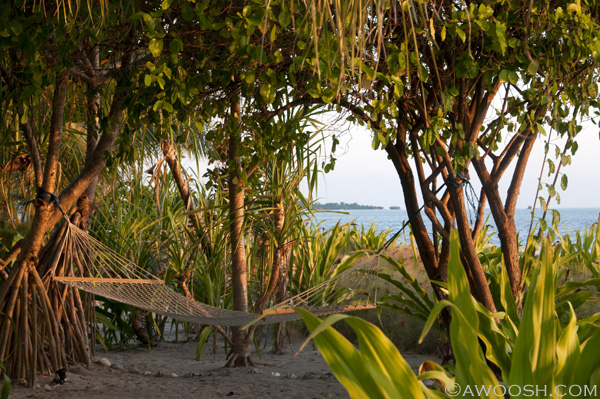

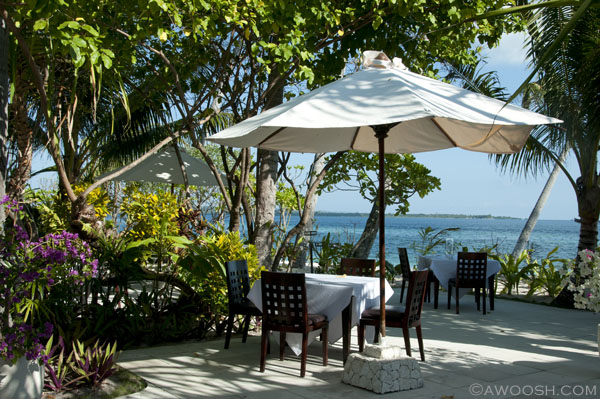
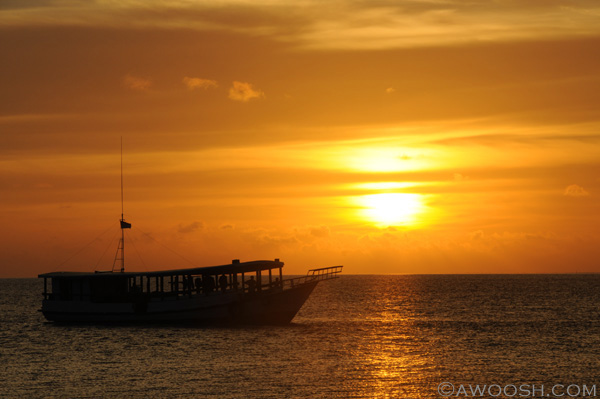
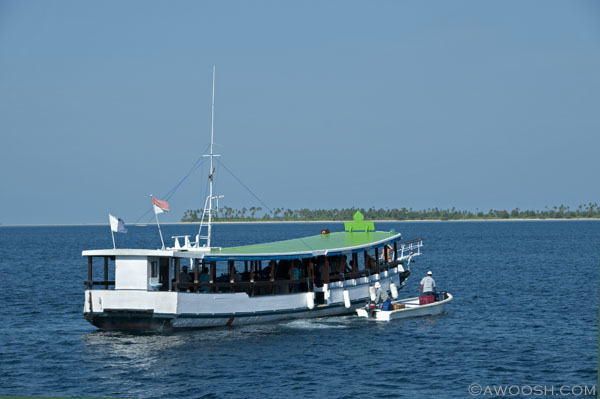
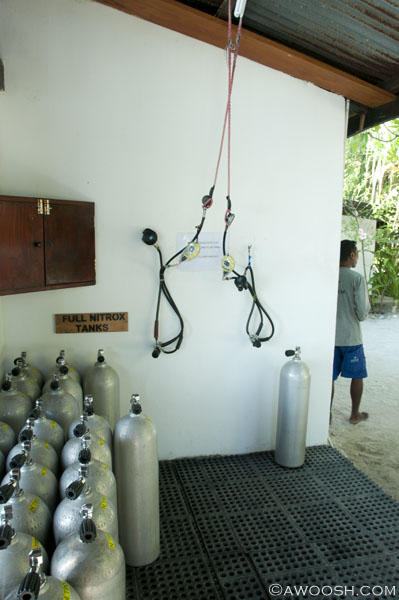


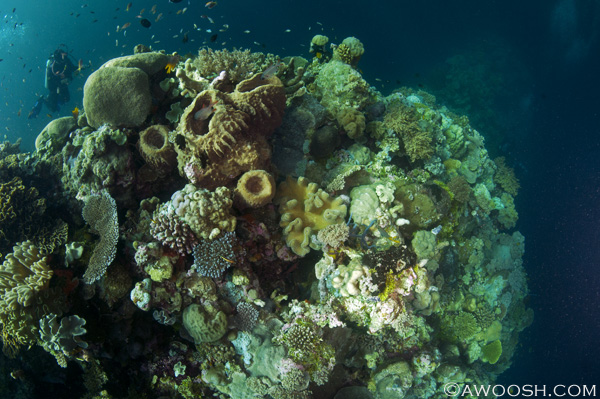
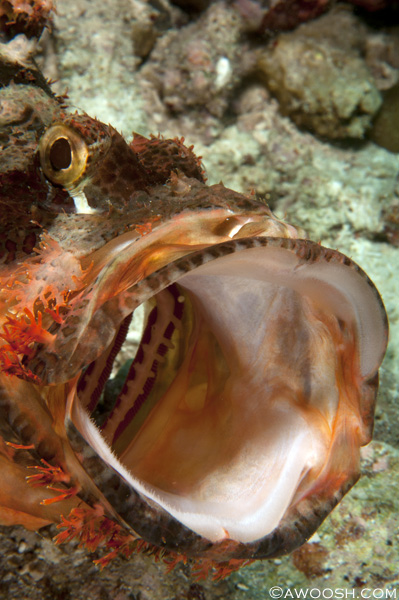
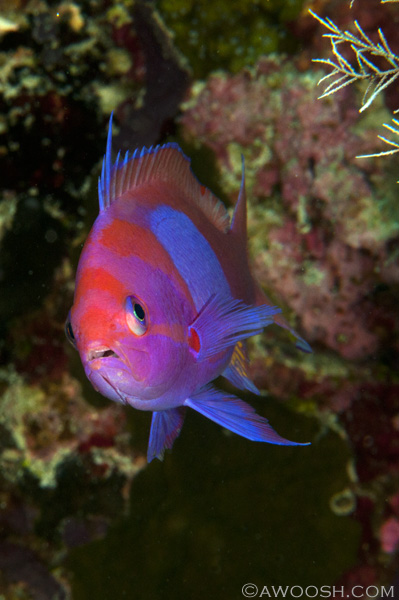
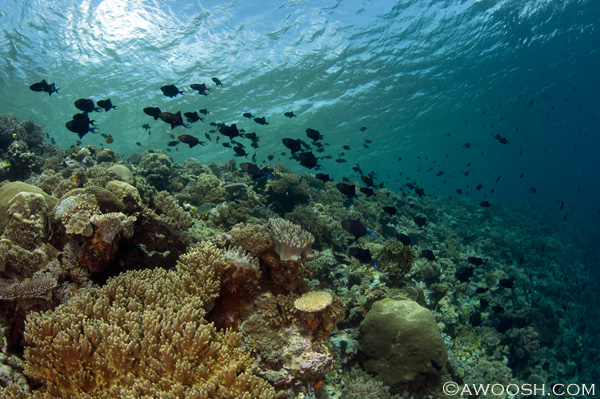


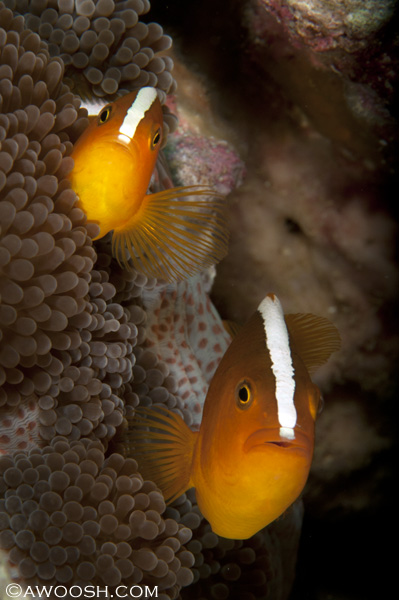
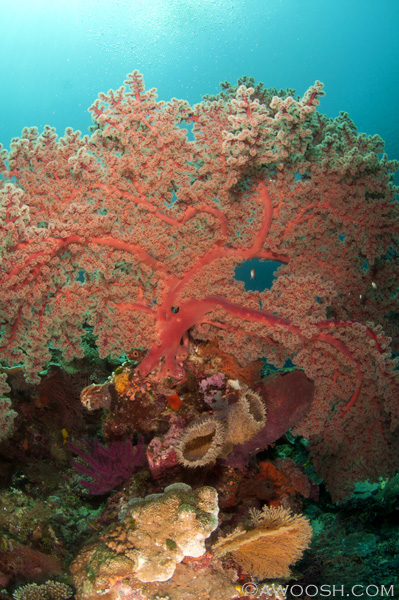
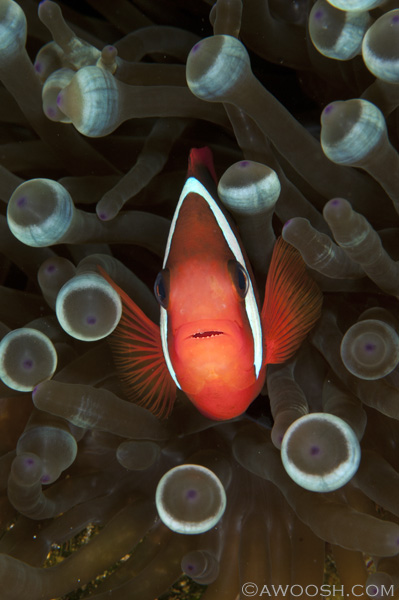
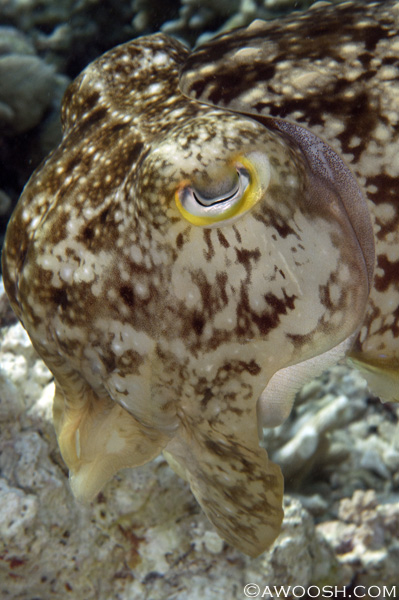



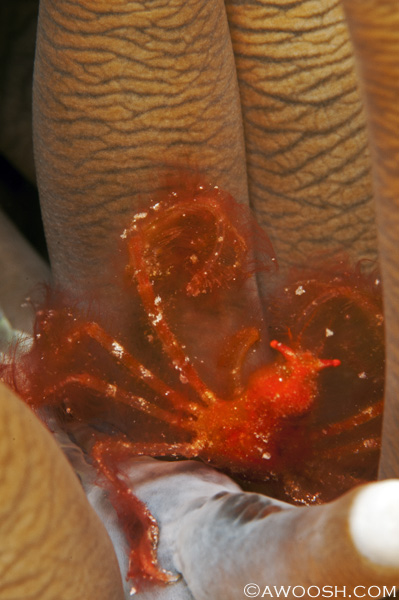
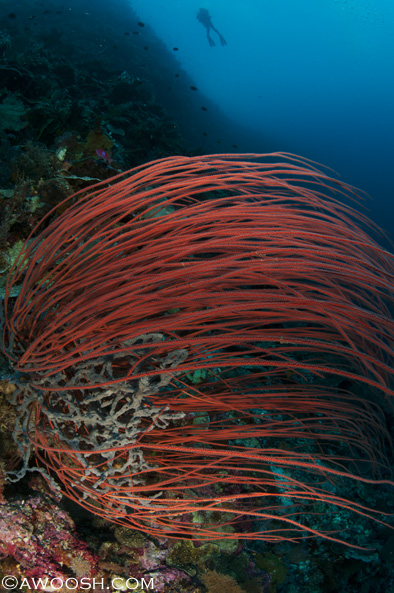


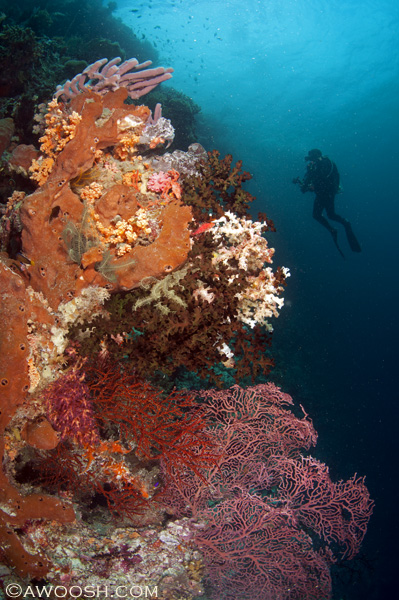
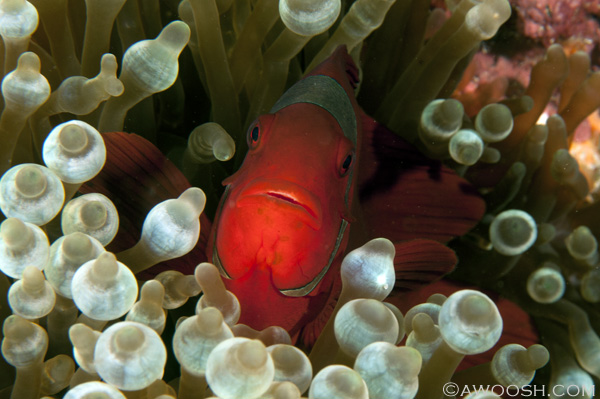

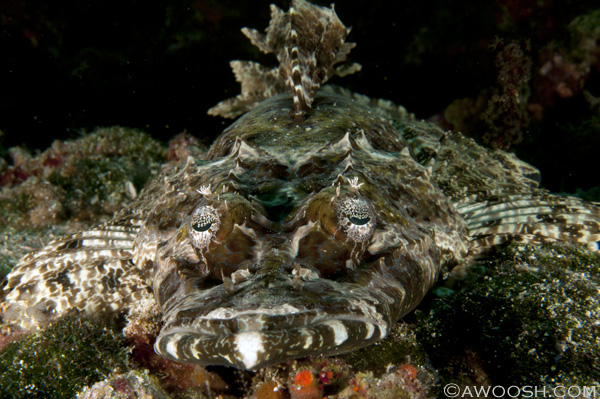
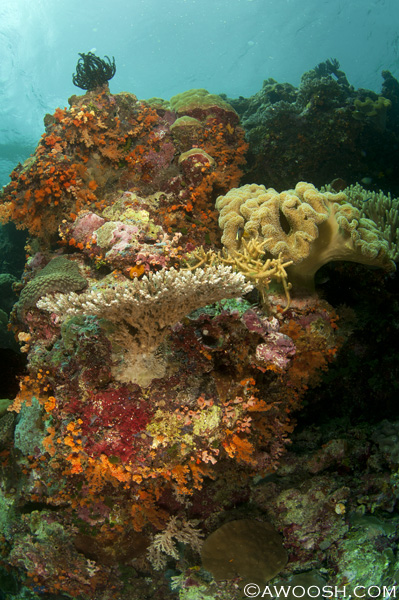
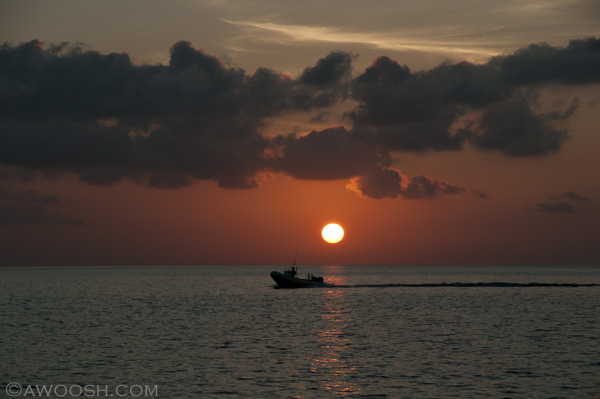
14 Responses to Trip Report: Wakatobi Dive Resort, Indonesia